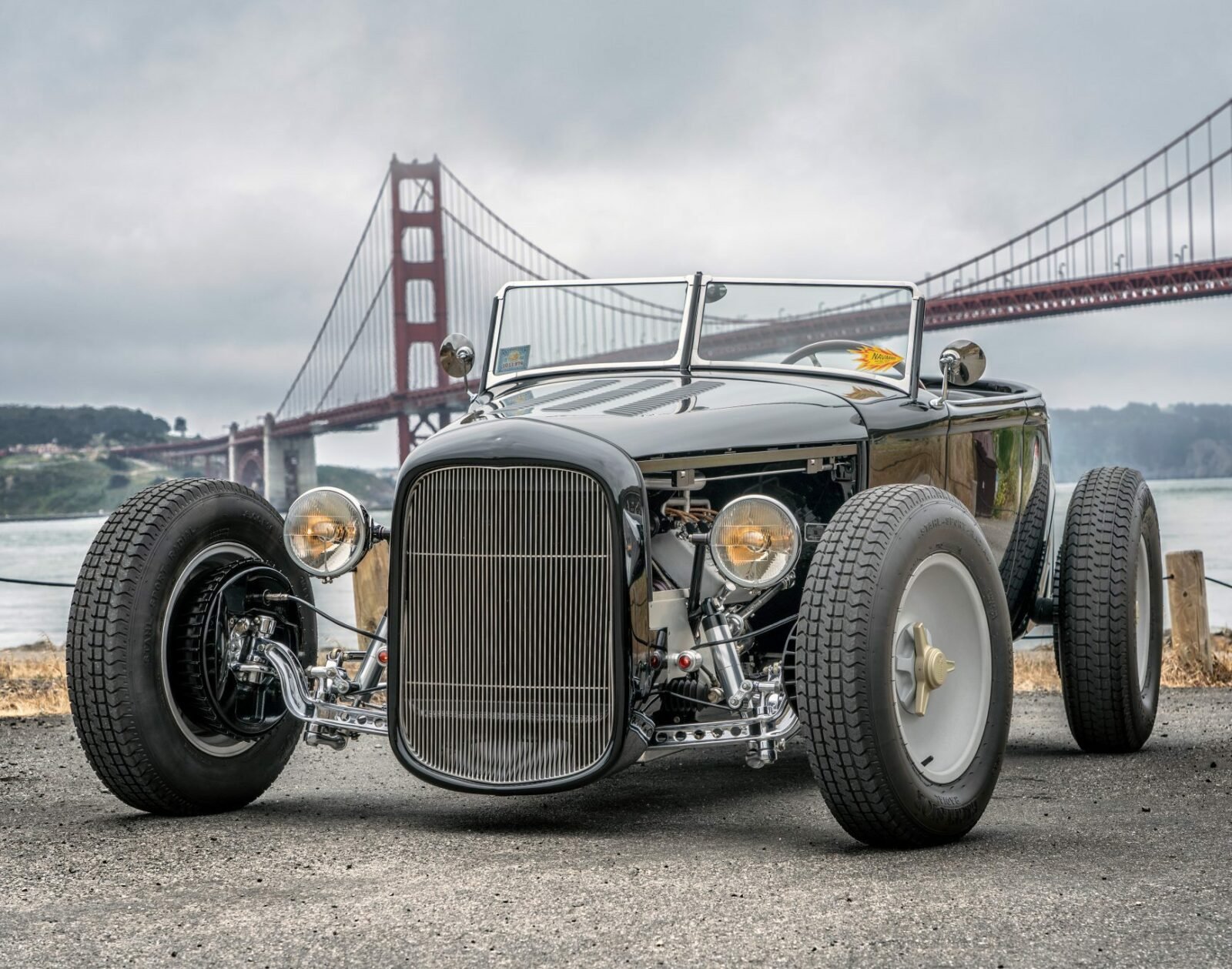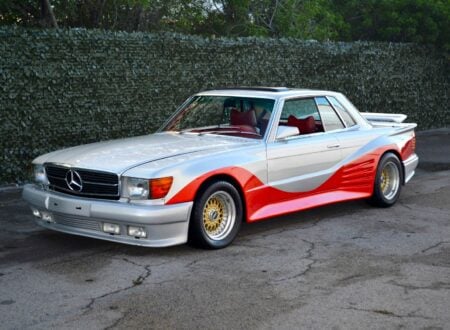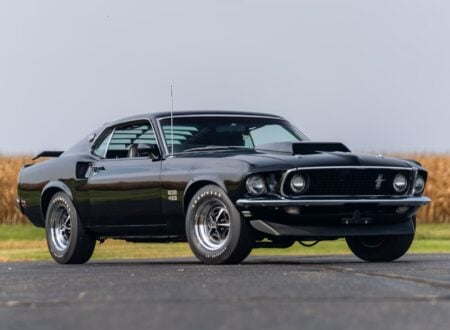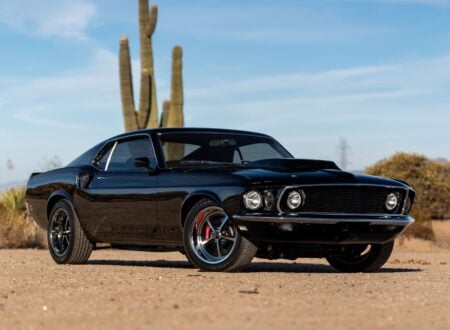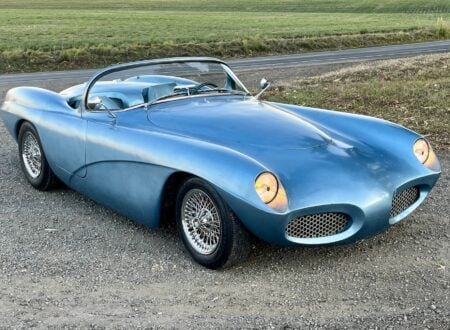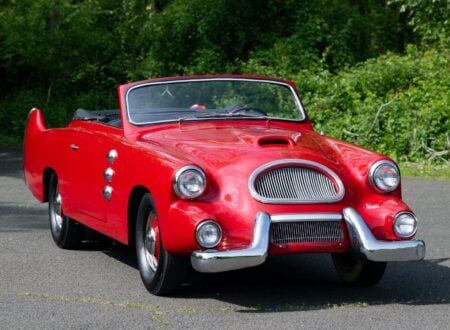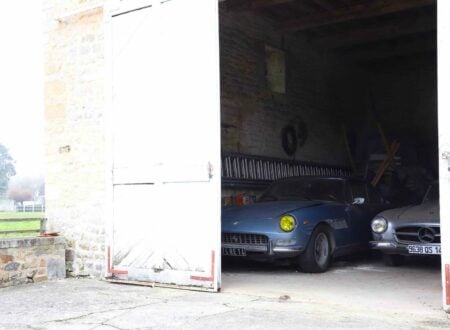This is the Ford Roadster DBR1 hot rod that was built by the team at H.A.T. Racing between 2002 and 2004. It’s powered by a high-performance Ford Flathead V8 and it rides on a custom-fabricated chassis fitted with steel bodywork.
The elegant steel body and split windscreen were fabricated by the late-great Garwood “Woody” Gilmore, an icon in the hot rod scene, and the engine was hand-built by Lorry Azevedo using a French-made block and a slew of performance parts.
Fast Facts – The Ford Roadster DBR1 Hot Rod
- Hot rods were originally developed in the 1930s and 1940s, they then enjoyed a signifiant boom in popularity in the 1950s and beyond. Arguably the most important and influential car in hot rod history was the 1932 Ford V8, the first affordable V8-powered car that has now formed the basis for countless hot rods and other custom builds.
- Where the name “hot rod” actually came from is a bit of a mystery, the current leading theory is that it came from the hot cams used in high-performance engines – these cams were nicknamed “hot rods.”
- The hot rod you see here was built by H.A.T. Racing between 2002 and 2004. It has an all-steel body fabricated by the legendary Garwood “Woody” Gilmore and it’s powered by a Ford Flathead V8 built by Lorry Azevedo which sends power to the rear wheels via a Tremec 5-speed manual transmission.
- This vehicle is now being sold out of Tiburon, California with just 4,600 miles on the odometer and a California title listing the car as a 1946 Ford.
Hot Rods: A History Speedrun
Much has been said about the history of hot rods, and not all of it is accurate. One issue in telling the story accurately is defining what a hot rod actually is, and pinpointing when the first hot rods were made. It’s generally accepted that hot rods are directly descended from the souped up cars built by liquor smugglers during the Prohibition Era, this would also be origin of modern NASCAR.
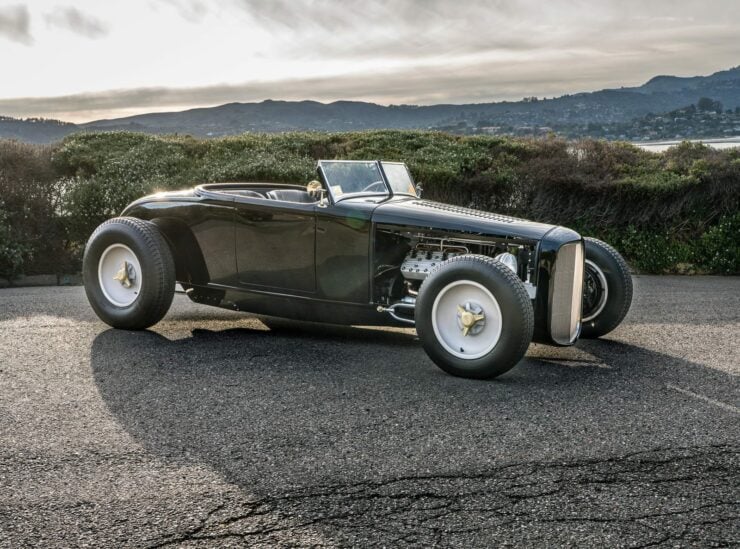

Of course, people have been modifying cars to make them faster since not long after the first cars entered production. It’s been said that the first motor race likely happened shortly after the second car was made, and there’s likely some truth to the joke.
Hot rods as we know them today first started appearing in the 1930s, this was largely thanks to the arrival of the Flathead Ford V8 engine which first entered mass-production in 1932 in the ’32 Ford V8. For the first time in history a V8-powered car was now financially attainable for working class people, and it would mark the beginning of blue collar America’s love affair with with the V8.
WWII kicked off in 1939 and America joined in 1941 after the Japanese attack of Pearl Harbor. During the war the hot rod world would effectively be on pause, the war ended in 1945 with all of the GIs returning home which resulted in hot rod popularity skyrocketing.
Many point to Southern California as hot rod ground central for this period, and much racing took place on dry lake beds and long empty highways. By the 1950s there were hot rod-centric movies regularly appearing in cinemas, with politicians vowing to clamp down on the dual scourges of rock ‘n roll music and hot rod racers.
Above Video: This is the full-length feature film Hot Rod Rumble from 957, it’s one of countless Hot Rod-sploitation films from the era centered around hot rod culture.
In the decades that followed hot rods have remained popular and they’ve had a significant influence on American automotive history and popular culture. People are now even asking electric hot rods, ensuring they’ll have a future well into the 21st century and beyond.
The Ford Roadster DBR1 Hot Rod Shown Here
The hot rod you see here is the Ford Roadster DBR1 and as you’ll remember from the introduction it was built between 2004 and 2006 by the team at H.A.T. Racing, with a steel body fabricated by Garwood “Woody” Gilmore and a Ford Flathead V8 built by Lorry Azevedo.
A custom-fabricated chassis utilizing boxed frame rails was built, it now sits on a drilled and polished drop axle up front with a traditional transverse leaf spring, QA1 double-adjustable shocks, and hairpin radius rods. In the rear you’ll find a live axle with a triangulated four-link arrangement and adjustable coilovers.
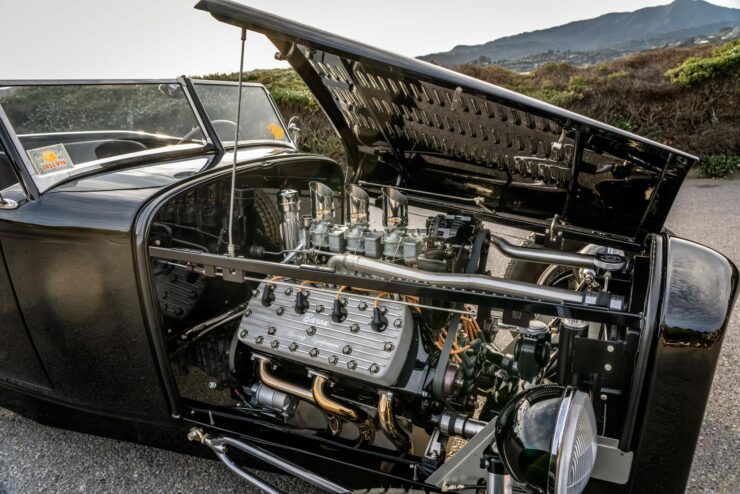

It rolls on Dished 16″ Rocket Racing wheels with Excelsior Radial tires – a 6″ section width is fitted up front and a width of 7.5″ is used in the rear. Brakes consist of Wilwood front discs along with classic rear drums, and the front discs are hidden behind Buick-style finned drum covers for a more authentic look while still offering modern braking ability.
Power is provided by that aforementioned Flathead V8, the block was made in France and modified with a 3.375″ bore and 4.250″ stroke to offer a new displacement of 305 cubic inches (5.0 liters) up from the original 221 cubic inches (3.6 liters).
This block was built up with Ross pistons, Crower connecting rods, an Isky camshaft, triple Stromberg 97mm carburetors, a Barney Navarro intake manifold, Baron Racing Equipment cylinder heads, custom-fabricated equal-length exhaust headers, a custom-fabricated 12 quart oil pan, stainless steel coolant lines, and fabricated hard fuel lines.
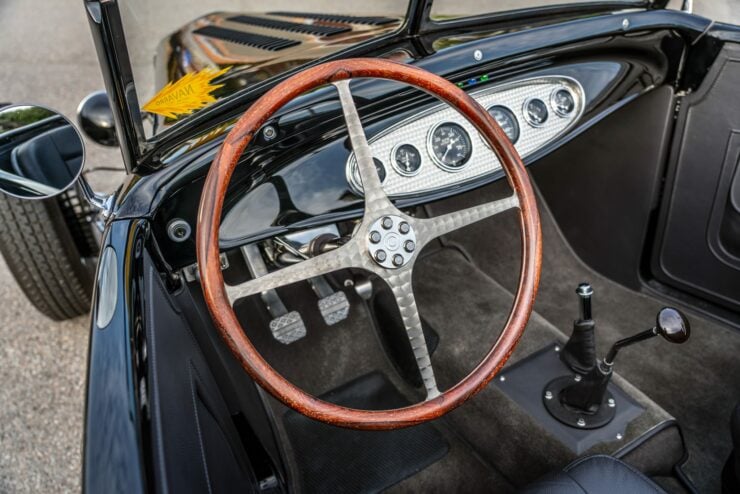

The engine is mated to a Tremec 5-speed manual transmission and a Winters Quick Change rear axle featuring 4.10:1 gearing.
Inside the vehicle you’ll find a classic wood-rimmed steering wheel, Stewart-Warner gauges, discrete gray carpeting, low-back bucket seats, color-coordinated door panels, a floor-mounted shifter and parking brake handle, and a Ernst Benz aircraft chronometer.
The Ford Roadster DBR1 is now being offered for sale out of Tiburon, California with a California title describing the car as a 1946 Ford on Bring a Trailer. If you’d like to read more about it or register to bid you can visit the listing here.
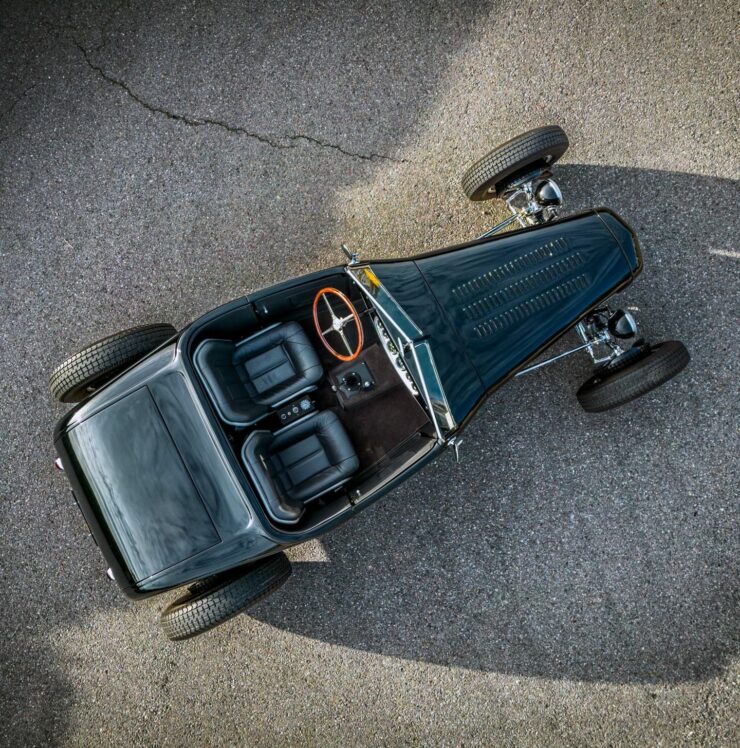
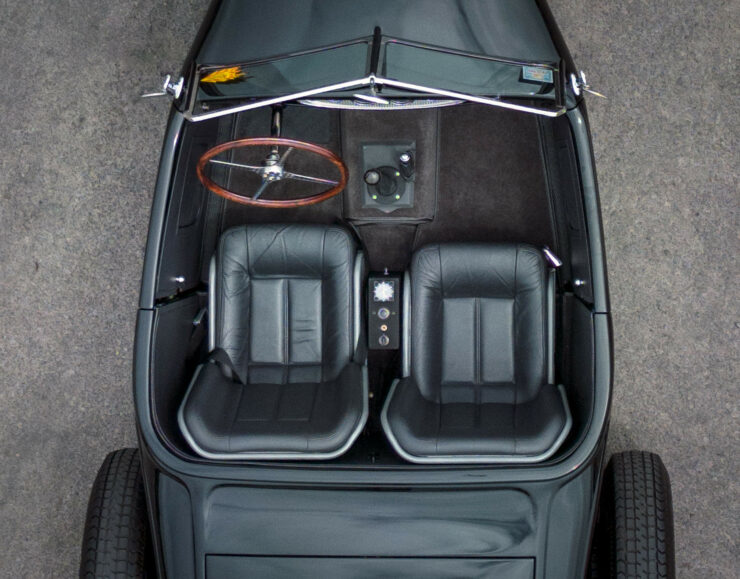
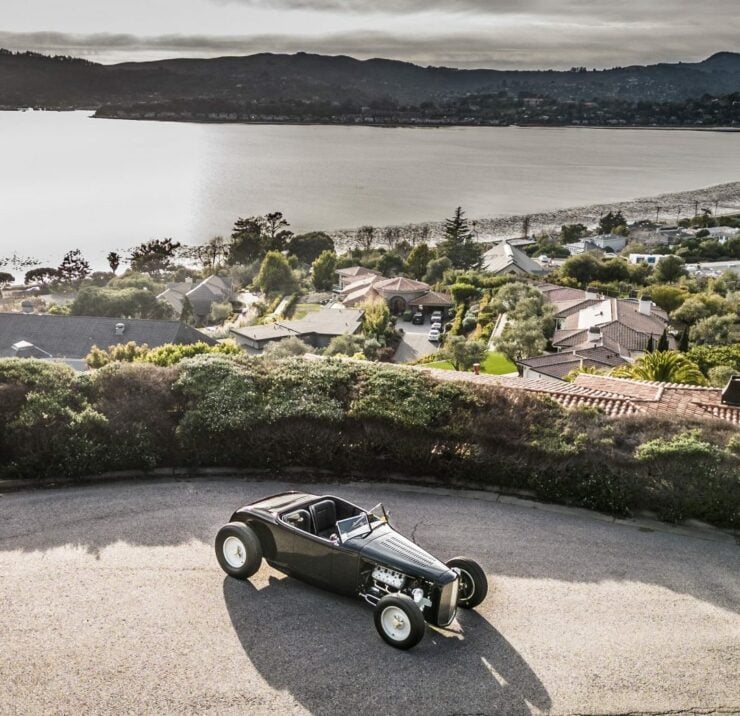

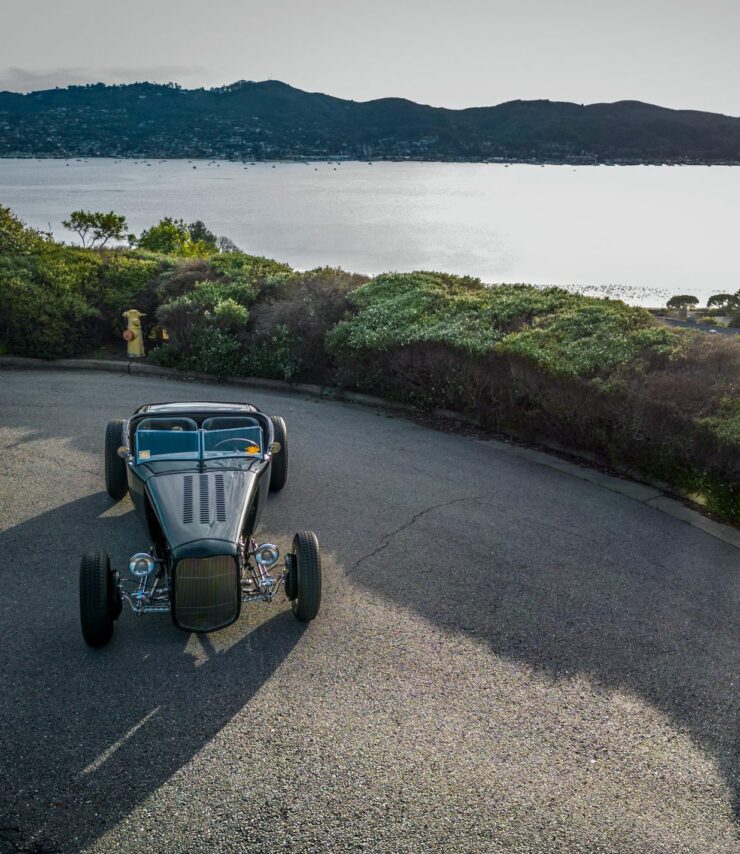
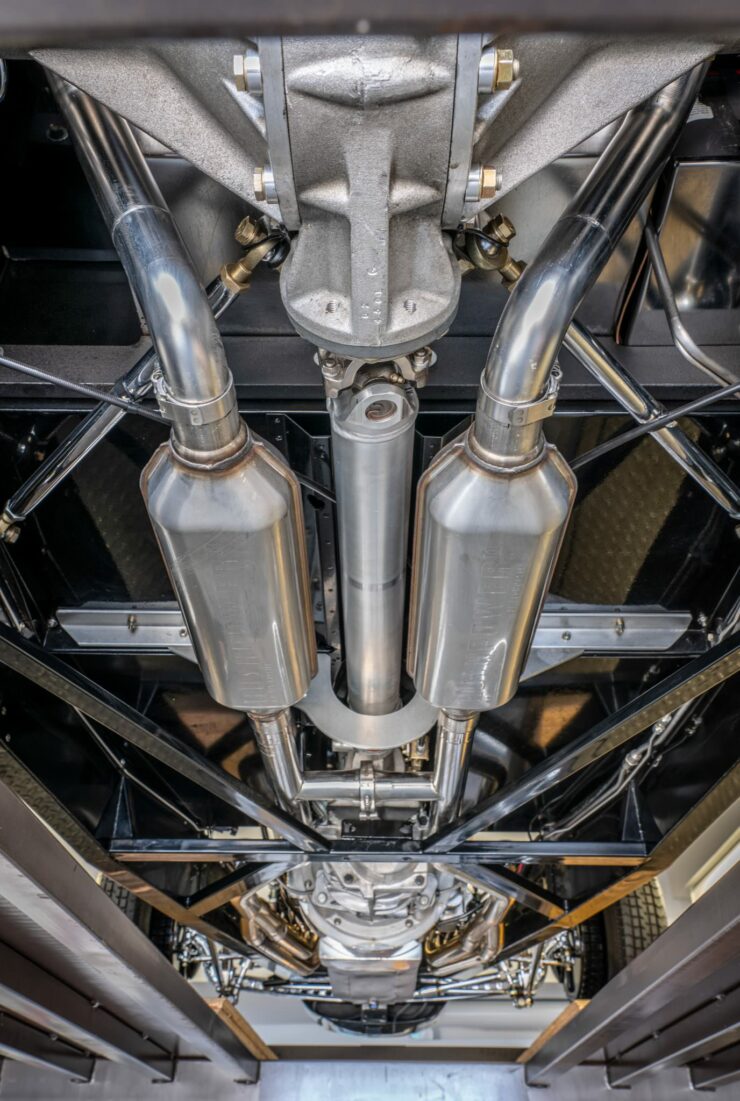
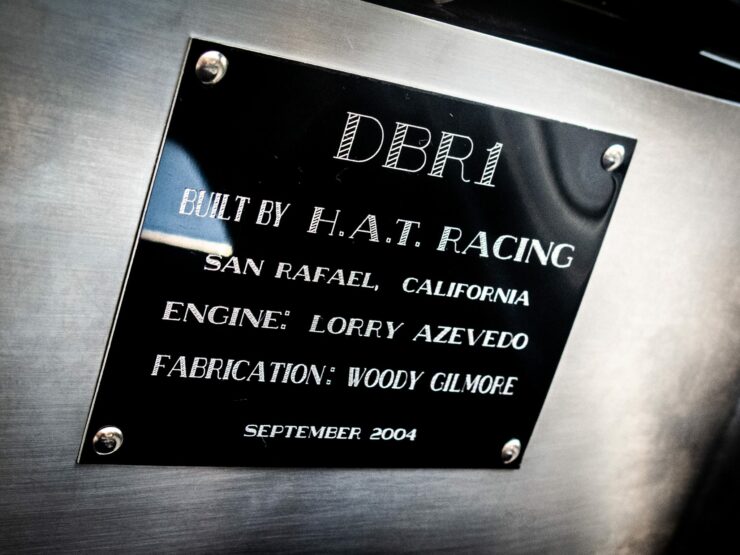
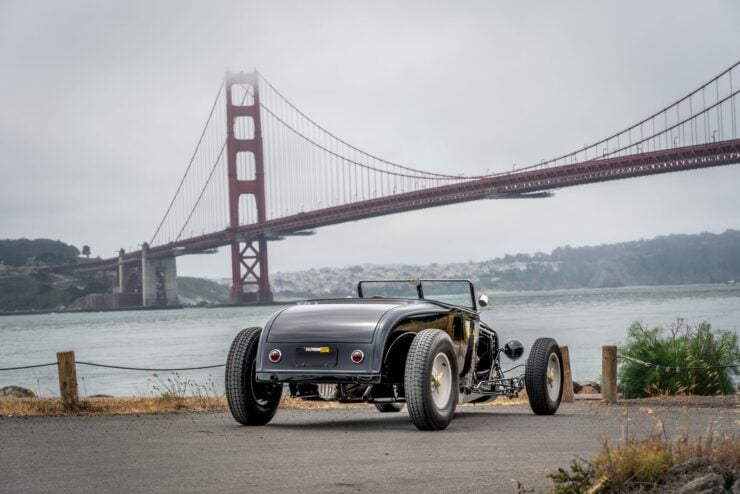
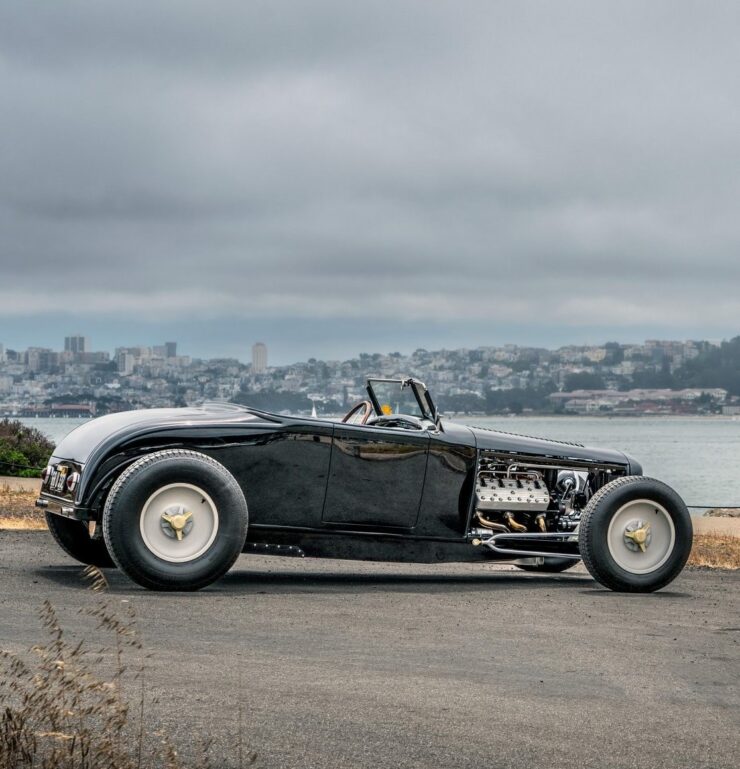
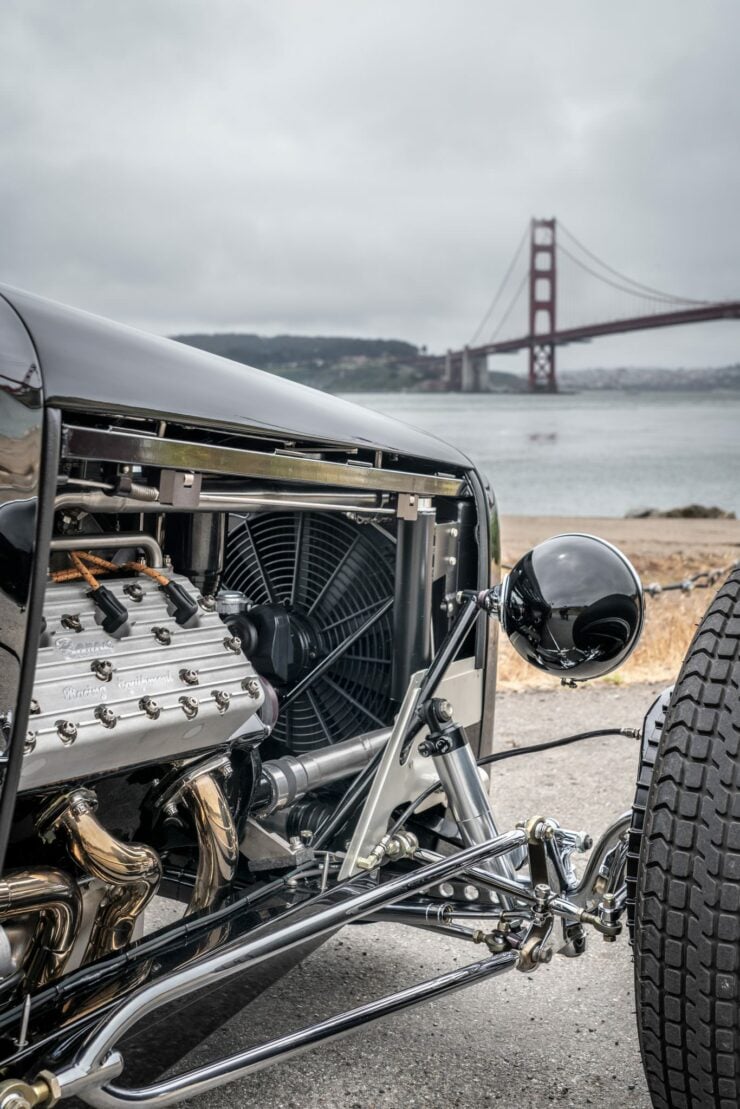
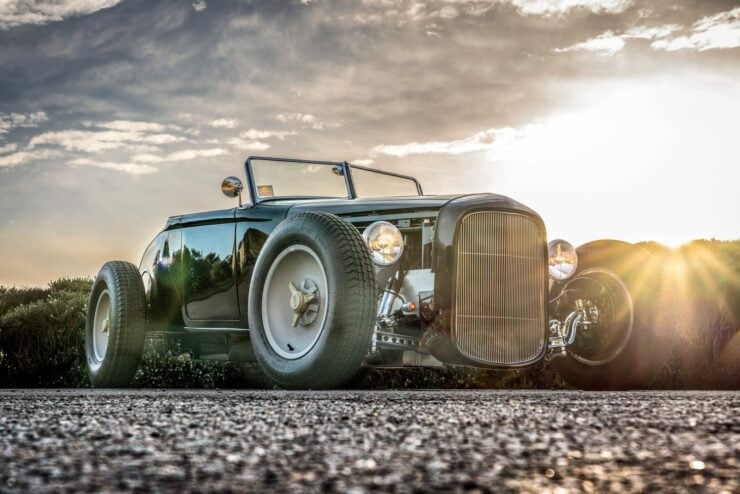
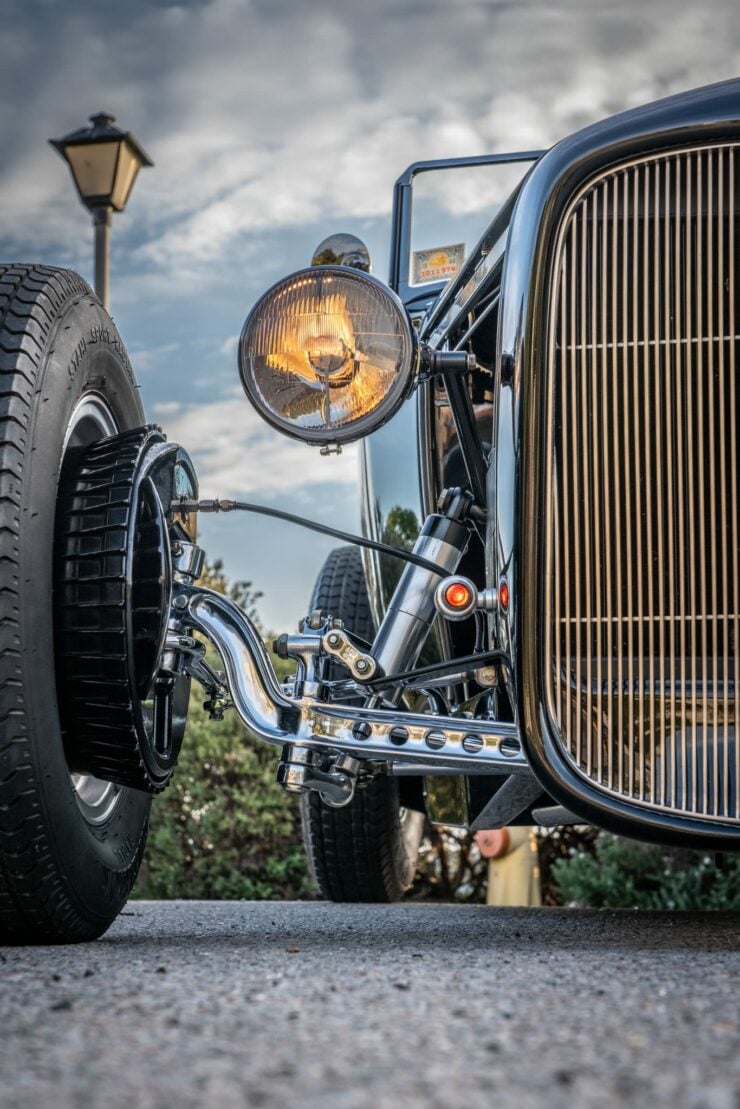
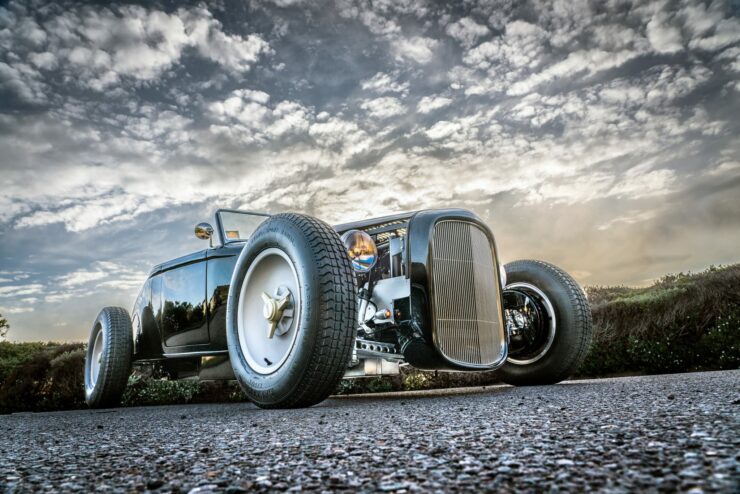
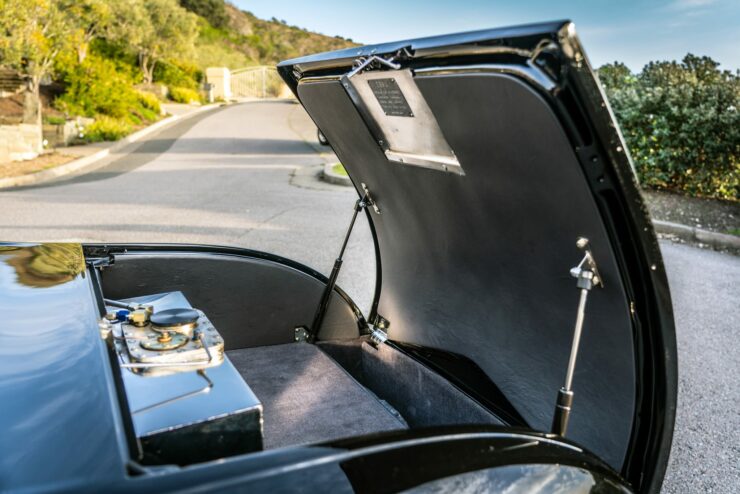
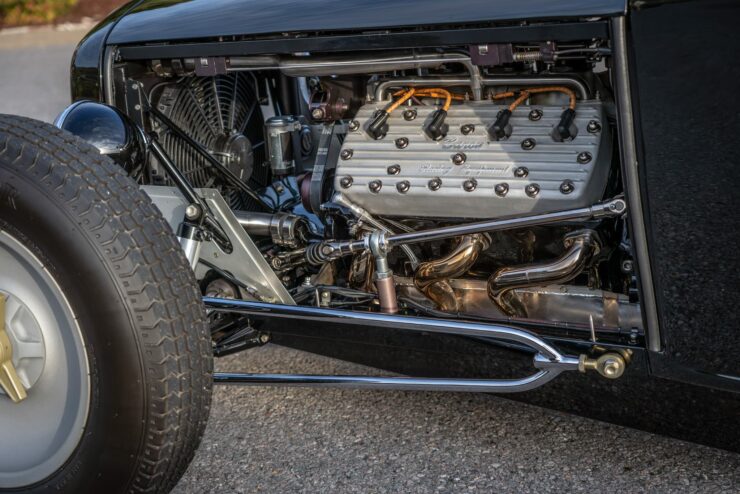
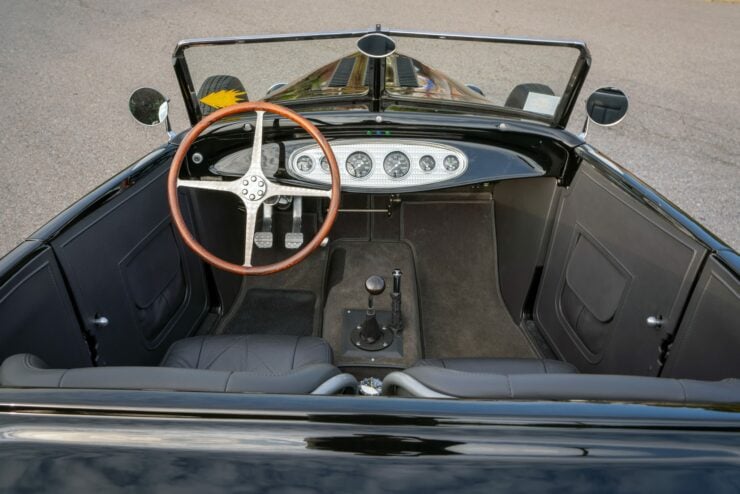
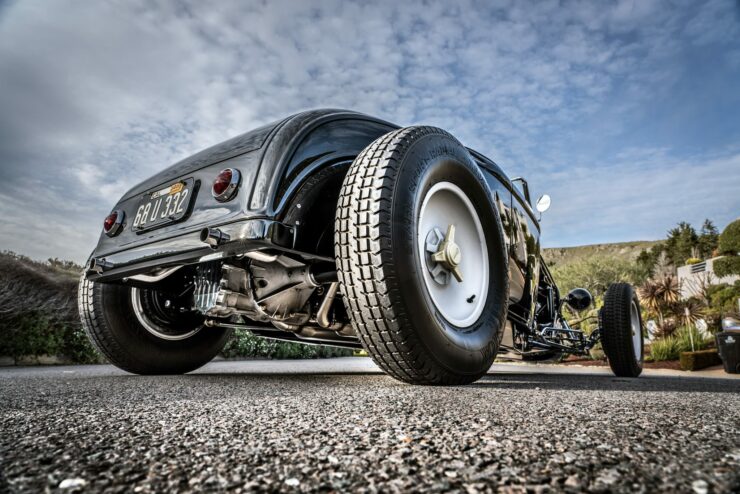
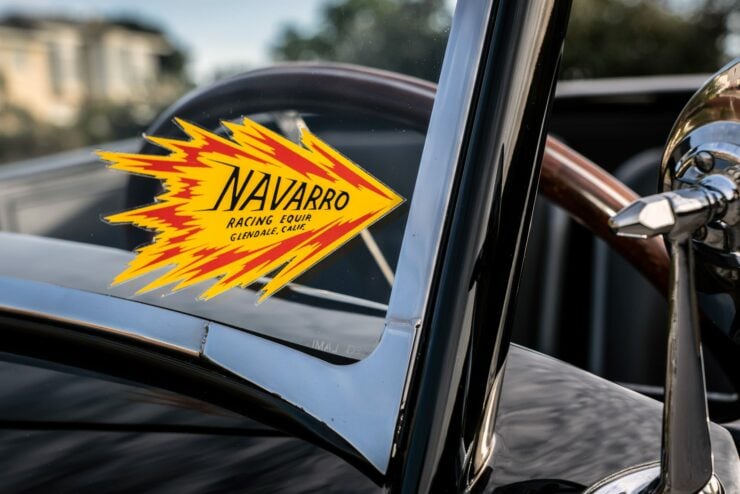
Images courtesy of Bring a Trailer

